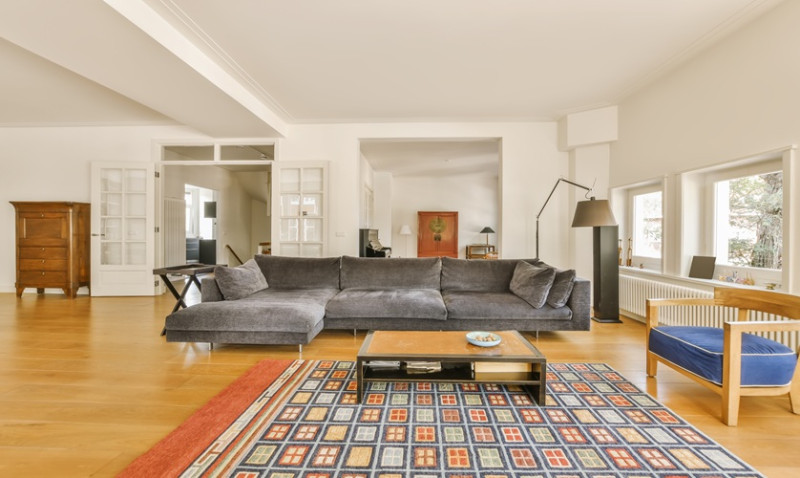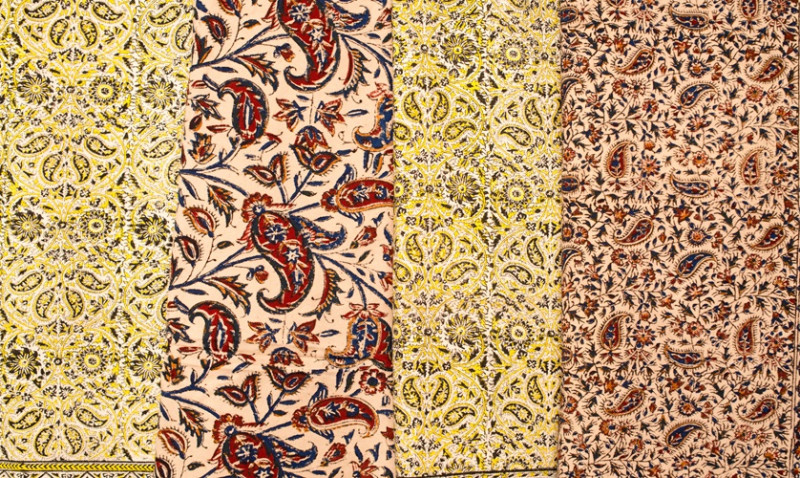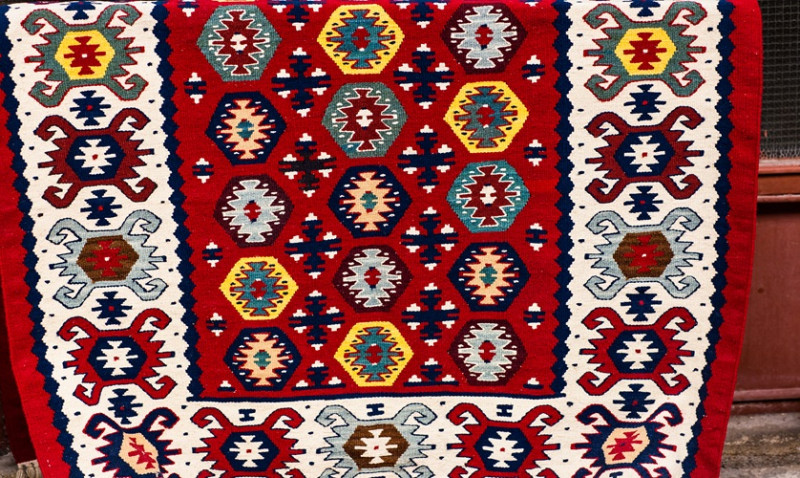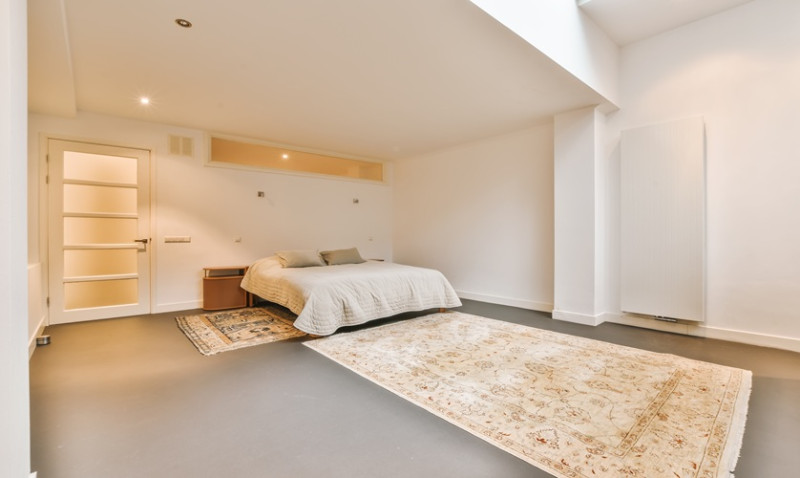
The dining room is one of the most lived-in spaces in any home – a place to gather, entertain and enjoy good food and company. One underestimated design element that can dramatically transform the look and feel of your dining area is the perfect rug under the table. Whether you're a DIY enthusiast updating your space or a design professional seeking inspiration, adding a rug can elevate the entire room, create visual cohesion and offer practical benefits like sound absorption and floor protection.
In this guide, we explore practical and stylish dining room rug ideas that are perfect for under your table, tailored specifically for UK homes of all sizes and styles. From size and material to pattern and placement, discover what to consider when selecting the right rug for both function and flair.
1. Choose the Right Size Rug
One of the most common mistakes homeowners make is choosing a rug that's too small. When it comes to dining rooms, size matters. A well-fitted rug anchors the dining table and chairs, making the setup look intentional and grounded.
Rule of thumb: Your rug should extend at least 60cm (24 inches) beyond all sides of the dining table. This ensures that chairs stay on the rug even when pulled out. Measure your dining table and add a minimum of 120cm to both the width and length to determine the ideal rug dimensions.
Here's a simple table to help you choose the correct size:
| Table Shape | Seating Capacity | Suggested Rug Size (Approx.) |
|---|---|---|
| Rectangle | 4–6 people | 160 x 230 cm or 200 x 290 cm |
| Rectangle | 6–8 people | 200 x 290 cm or 240 x 330 cm |
| Round | 4 people | 200 cm round rug |
| Round | 6 people | 240 cm round rug |
Choosing the right rug size ensures comfort and prevents the annoying scraping noise of chair legs catching the edge of the rug—a win both aesthetically and functionally.
2. Select the Best Material for Practicality
Dining areas are high-traffic zones and prone to spills and crumbs, so durability and easy maintenance should be top priorities in rug selection. Your choice of material can make all the difference when it comes to longevity and ease of cleaning.
Wool is a popular option thanks to its durability and natural stain resistance. It also provides a soft, warm underfoot feel—perfect for chilly UK winters. However, wool rugs can be more costly and might not be suitable for those with allergies.
Synthetic fibres like polypropylene or polyester offer excellent stain resistance and come in a wide range of patterns and colours. These are ideal for families with children or busy professionals who need low-maintenance solutions without compromising on style.
If you're leaning toward eco-conscious design, consider flatweave rugs made from jute, sisal or recycled materials. These are often affordable, have a textured, rustic charm and are relatively easy to clean, though not as soft as wool or synthetics.
Lastly, don't overlook indoor-outdoor rugs – they are surprisingly stylish, waterproof and ideal for high-traffic dining areas in modern homes or flats with open-plan layouts.
3. Match the Rug Shape with the Table
The shape of your dining table should heavily influence the shape of your rug. This visual alignment enhances symmetry and improves the flow of the room. Rectangular tables generally look best with rectangular rugs, allowing chairs on longer sides to remain fully on the rug even when pulled out.
Round dining tables pair beautifully with round rugs, creating a harmonious and intimate setting. This setup also helps soften the often boxy lines of a room and adds a welcoming, cosy feel. Square rugs can also work under square dining tables, particularly in compact dining rooms or breakfast nooks.
For those with extendable tables, it’s smart to size the rug for the table’s fully extended position to ensure future flexibility. If your table can host more guests during special occasions, plan accordingly so that every chair remains properly supported.
4. Play with Colour and Pattern
The dining room is a great space to express your personal style. Rugs can act as eye-catching centrepieces or subtle backdrops, depending on your aesthetic goals. For minimalist or modern décor, opt for neutral shades and simple geometric patterns to enhance clean lines and spaciousness.
Traditional homes can benefit from Persian-style or oriental rugs featuring rich tones like burgundy, navy and emerald green. These timeless pieces add sophistication and can tie in beautifully with rustic or vintage furniture.
Don’t shy away from bold patterns or colours if you're working with an otherwise neutral room. A colourful rug can inject personality and warmth, becoming the design focal point of the space. Just remember to balance other elements in the room, such as wall colour and table finish, to avoid visual clutter.
If you often change your interior décor, opt for a rug with multiple hues or patterns – these are more forgiving when switching other design elements and provide long-term versatility.
5. Don’t Forget About Texture and Pile Height
The texture and thickness (pile height) of a rug are not just tactile considerations—they also influence visual perception and practicality. For dining rooms, low- to medium-pile rugs are ideal. They are easier to clean and reduce the risk of catching chair legs or trapping crumbs.
Flatweave rugs (like Kilims or Dhurries) offer a smooth surface that allows dining chairs to glide effortlessly. They also tend to be more affordable and lightweight, making them easy to roll up and clean seasonally.
Shag or high-pile rugs, while luxurious and warm, are best avoided in dining areas. They trap food and drink spills more easily and require more effort to keep clean—especially important in households with children or entertaining-heavy lifestyles.
Textural contrast can also be a design strategy. For example, pairing a sleek modern dining table with a slightly rougher natural fibre rug like jute adds depth and character to the room without overwhelming the design.
6. Layering Rugs for Flexibility and Style
Rug layering is an increasingly popular trend, especially in eclectic or boho-inspired interiors. This design trick allows you to mix colours, textures and even rug materials for a tailored, collected look. It's also a budget-friendly way to update your space – simply change the top layer for a fresh look every season.
In dining rooms, layering works best with a large neutral rug as the base (think jute or sisal), and a smaller accent rug on top that aligns under the table. This allows you to get creative with bold patterns without overwhelming the room.
Layering also helps fill awkward or larger dining spaces where one single rug might not be large enough. Just be careful that the top rug is tightly secured to prevent movement and that all chairs remain supported.
For design-conscious professionals or homeowners who refresh their look often, layered rugs offer the flexibility to adapt quickly without a full renovation.
7. Rug Care and Maintenance Tips
Once you've found the perfect rug, maintenance is key to preserving its appearance and longevity. Make vacuuming part of your regular cleaning routine and attend to spills immediately to prevent staining. Using a rug pad underneath helps prolong the life of your rug by reducing friction and offering extra cushioning.
Rotate your rug 180 degrees every few months to ensure even wear – particularly if sunlight hits one side of the rug more than the other. This helps prevent fading and uneven flattening over time.
If your rug is machine-washable, like some newer synthetic or cotton flatweave styles, take advantage of that feature every few months for deep cleaning. Otherwise, professional rug cleaning is recommended once a year depending on usage.
Investing in those small upkeep steps goes a long way in maintaining the rug as a stylish and functional element of your dining room.
Final Thoughts
Adding a rug under your dining table is one of the simplest yet most impactful ways to refresh your dining space. Whether you live in a cosy London flat or a countryside family home, the right rug can tie your room together, make guests feel more welcome, and even protect your floors.
Consider factors like size, material, shape and style to find a rug that complements your lifestyle and needs. Whether you're aiming for practicality, polish or a bold design statement, this essential layer has the power to transform your dining room from average to outstanding.
Ready to roll out a new look? Let your rug do the talking at your next dinner party.





